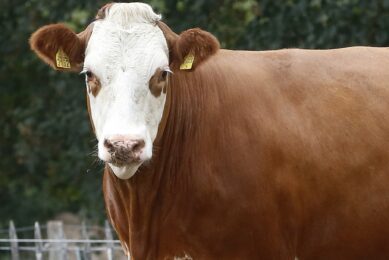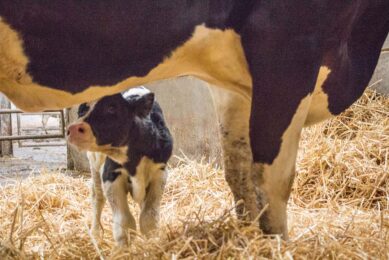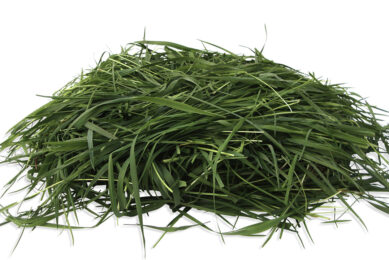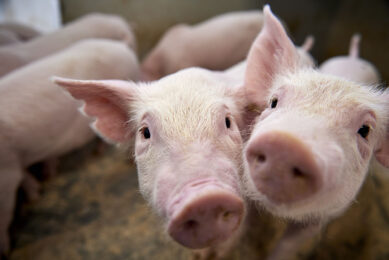Interview: What makes a good sensor?

We are learning fast when it comes to sensors for dairy cows. But what are the latest innovations and insights? Dairy Global talked to Arnold Harbers from Nedap about what is yet to come.
Sensors are making their way to dairy farms around the world. Often, sensors are used for heat detection. But sensors can tell us so much more. Think of data around eating, rumination, non-chewing, lying, standing, number of steps and the number of times the cow stands up. To speed up our knowledge about this, Dutch company Nedap started an extensive field study in 2016, on 8 dairy farms, together with Utrecht University, Wageningen University and Research Centre and Vetvice Consultancy in the Netherlands. Arnold Harbers, data analyst at Nedap is actively involved in this field study and explains more.
Nedap calls this project ‘Sense of Sensors in Transition Management’. What does this project entail and why did you start it?
“The goal of the project is to create tools that can help farmers improve their dairy cow transition management. Ultimately, we want to make it possible for every cow to transition healthy. That is of course ambitious but I believe it is good to have big dreams. The information from the sensors can identify areas for improvement, can show effects of management changes and can monitor transition management. In this project extensive health checks are done by veterinarians in the pre-fresh and fresh cows, and sensor data is collected from all cows on 8 dairy farms. Together with the production and reproduction data of these cows we can identify the cows with a successful transition. From the sensor data we want to extract ‘feed forward indicators’ to monitor and improve transition management.”

There are many sensors on the market. What are the important features of a good sensor, besides the price?
“This is, by far, service and support. I really believe it is even more important than price. A cheap sensor with limited service or support is actually a very expensive sensor. Our sensor, for example, is integrated in reproductive management solutions of AI / breeding companies and in the milking solutions of major milking equipment companies. These companies have worldwide distribution channels. Using this existing network, we can ensure a good service and support all day, every day around the world. Of course, there are other important things as well. A good sensor does more than just heat detection. A good sensor tracks a cow 24/7 and collects information that is otherwise hard to measure. Eating time, rumination time, non-chewing time (time not eating and not ruminating), lying time, number of steps, number of standups are all examples of features that good sensors collect. Doing this manually for every cow, all day, every day is impossible. Yet it is important to know this because it has an impact on farm revenue. Another important feature in my opinion is electronic identification in the sensor (the individual cow recognition). This type of identification is not standard in each sensor. Knowing which animal it is, is essential in the production of first-class quality milk in milking robots or conventional parlours. Electronic identification is also important in combination with sorting gates. Based on sensor information cows that need treatments or extra checks can be sorted automatically. Finally, a good sensor is a sensor that improves the major processes on your farm, like milk production, reproduction, feeding.”
Are farmers ready or trained enough to transform data from sensors into useful information? For example: Who determines if the cow is not lying or eating well?
“Having sensors is one thing, but it is important that sensor data is turned into user friendly alerts, worklists, reports, barn maps and insights. This way, it answers the questions that farmers have, such as: Which animal needs immediate attention? (urgent health attentions and heat alerts), which animals need treatments regarding fertility or diseases and what happens if I change feeding strategies, milking procedures or housing conditions? Group / herd performance and behaviour reports give insights on where to improve on in the long term. Sensor technology helps farmers to answer these questions. The farmer can then decide how to act on it.”

In the project you talk about ‘feed forward’ instead of ‘feedback’. What do you mean with that?
“Feedback looks at the history. You can learn from it, and you can use it to set targets and thresholds. However, you cannot act on it. To be in control and to steer, you are too late with the historic data. Think of days the cows are open, last week’s rumination time and the percentage of cows with retained placenta. Using feed forward data provides information that will guide results in the future. When feed forward indicators are good, the process will produce results that match your end goals. When they are not ok, you will want to correct things. For instance, the body condition score (BCS) during the dry period is a feed forward indicator for fresh cow problems. Eating time, rumination time, feed intake, rumen fill, and BCS during the start of lactation are feed forward for the process of getting cows pregnant. In our project we focus on these feed forward indicators. We believe these types of indicators are very promising and are under-represented in the current indicators available to producers.”
How can sensors help the modern dairy farmer manage large herds?
“Sensors are a very good way to keep a close eye on the fertility, health, well-being and location of every cow. And this can be done 24/7. This is important as farms and herds are getting bigger. Farm owners struggle to get qualified, motivated and affordable staff. In addition, sensor technology makes it possible to implement ‘management by exception’ on large farms. This means: only focus on those cows that need attention while not disturbing daily routines of the cows that do not need attention or treatment. Think of dairy cows as workaholics. They need to spend a lot of time feeding and lying without interruption. Lockup time is a huge interruption in the daily routine of a dairy cow. Minimising lockup time is a good way to improve the life of a dairy cow. She will reward you with higher milk yields. Sensors have the potential to reduce lockup time because you do not need to lockup the entire group for cow checks and treatments. Sensor information can also be used at operational, tactical and strategic levels. Operational level is the daily work that needs to be done. Tactical and strategic levels focus on the mid and long term. Sensors can help because they actually show what your cows are doing. If you decide to improve your feed management (diet composition, feeding time, push ups, etc) the sensors will tell you if your cows think it is an improvement too. Together with the milk production and reproduction results of your cows this gives you an answer whether the change in feed management was a true improvement.”

In the near future, can or will sensors replace the farmer in detecting sick or pregnant cows for example?
“Well, the sensors can give an automatic alarm, such as: ‘This cow shows abnormal behaviour.’ This is a very helpful tool. But with proper cow observations, like monitoring temperature, BCS, locomotion, hygiene, manure, rumen fill and milk production, currently available sensor technology will not often point out a truly sick cow that you haven’t detected already. Sensors can confirm your suspicion that a cow is struggling. Plus, they can give you a better impression of how sick a cow is and how long it has been having problems. Skilled people are still necessary to make the final call, but sensors add extra information to this process so they can make better decisions. Sick cows are a good example of a feedback indicator: once the cow is sick, you are too late. With sensors we want to identify at-risk cows. This is a feed forward indicator because you have the opportunity to prevent the cow from becoming truly sick.”
How can sensors help to better understand and improve transition management?
“The transition period is a very delicate period for the dairy cow. A perfect start after calving ensures a healthy lactation with good production and fertility. For example, it is important that the cow eats enough before calving and straight after to be able to maintain the milk production at a high level. By monitoring eating behaviour we make sure there is a sufficient and stable feed intake. Measuring rumination is important to make sure there are no problems in the rumen that can lead to ketosis, acidosis, displaced abomasum (DA) and milk fever. Activity sensors are key as they measure how active the transition cow is. Reduced eating and/or ruminating makes the cow less active. And a less active cow means a potential health issue. These changes are subtle and difficult to observe by people. We already see that cows that develop ketosis spend less time eating and ruminating in the entire dry period. This change is consistent, but less than an hour per day. Sensors can track these changes and notify you which animals are at risk for developing ketosis. This gives you the option to treat this cow and help her to a good start of the lactation.”
Will you continue to run the project in the coming years and what are still the knowledge gaps in using sensors and the data?
“This study will continue for several years. We are at the start of discovering all the possibilities to improve transition management. That is a really exciting journey and I am anxious to know where we will be in a couple of years. I think the biggest knowledge gap we have right now is to define the success factors of a healthy transition and to understand what is happening when a cow goes through transition. Once the success factors are known, we can develop effective feed forward indicators that the sensors can measure. Producers can use these indicators to improve their transition management and that should ultimately result in a healthy transition for every cow.”










